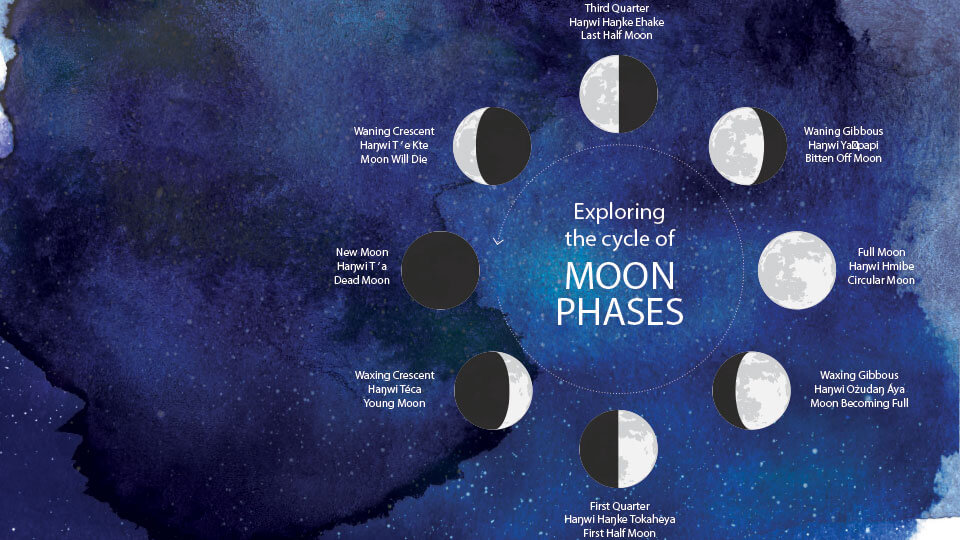Dakota Moons

The moon is essential to life as we know it. Traditionally, the Dakota used the moon to determine the passing of time. A name was given to the moon each month to symbolize significant events that were important to survival and food gathering. Learn more about the Dakota moons!
Wiyawapi (Counting Moons)
Below are the twelve moons that the Mdewakaŋtuŋwaŋ Dakota observe throughout the year. Traditionally, the Dakota New Year (Ómaka Téca) starts in spring.
| Dakota | English | Season |
|---|---|---|
| Maġa Okada Wi | Geese Egg Laying Moon | Wétu (Spring) |
| Wóżupi Wi | Planting Moon | Bdoketu (Summer) |
| Ważuṡteca Ṡa Wi | Strawberry Ripening Moon | |
| Caŋpa Sápa Wi | Chokecherry Ripening Moon | |
| Wasutuŋ Wi | When Things Ripen Moon | |
| Psiŋhnaketu Wi | Wild Rice Storing Moon | |
| Wáżupi Wi | Final Harvest Moon | Ptaŋyetu (Autumn) |
| Tahecapṡuŋ Wi | Deer Break Off Antlers Moon | Waniyetu (Winter) |
| Caŋpopapi Wi | Tree Popping Moon | |
| Witeḣi Wi | Time of Hardship Moon | |
| Wicata Wi | The Raccoon Moon | |
| Iṡta Wicayazaŋ Wi | Sore Eyes Moon |
Because the Dakota follow a thirteen lunar moon cycle, some years will have a thirteenth moon. It should also be noted that the seasons slightly shift when there are thirteen moons.
The thirteenth moon can be either of the following:
| Dakota | English |
|---|---|
| Wanicokaya Wi | Midwinter Moon |
| Bdokecokaya Wi | Midsummer Moon |

